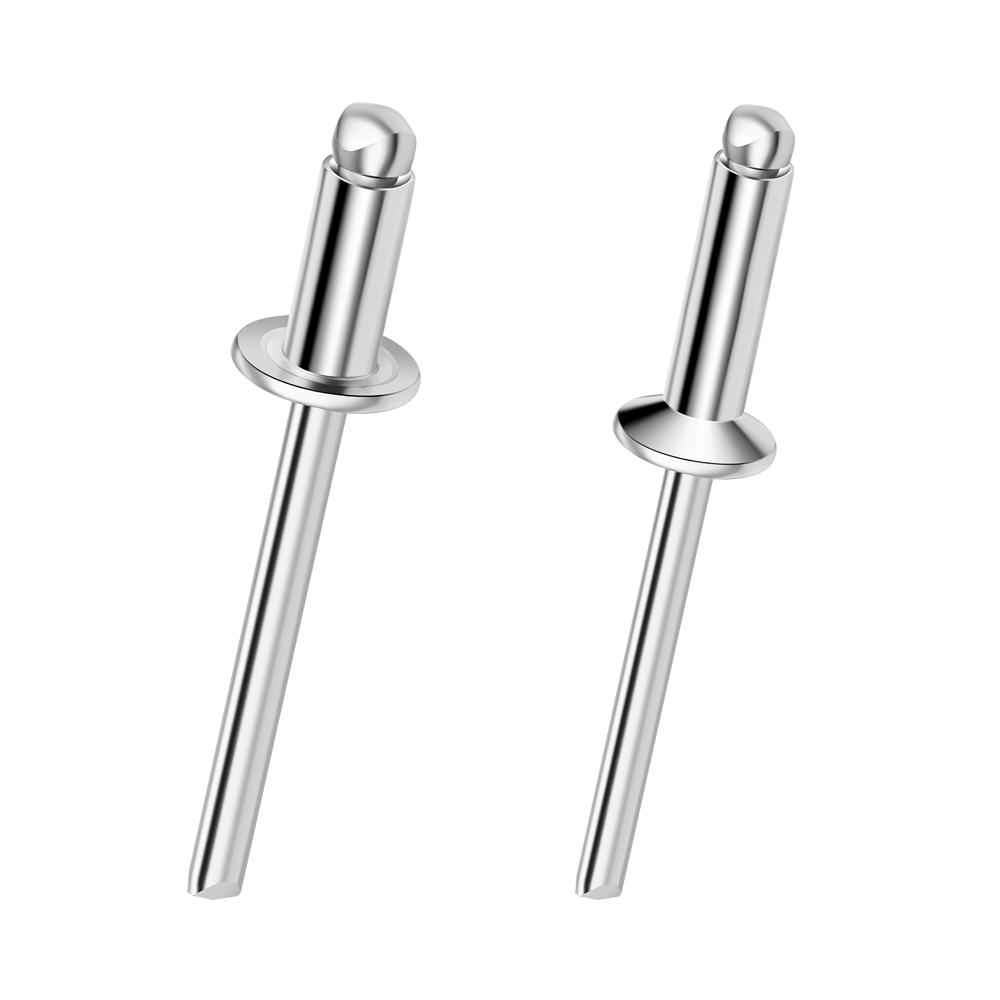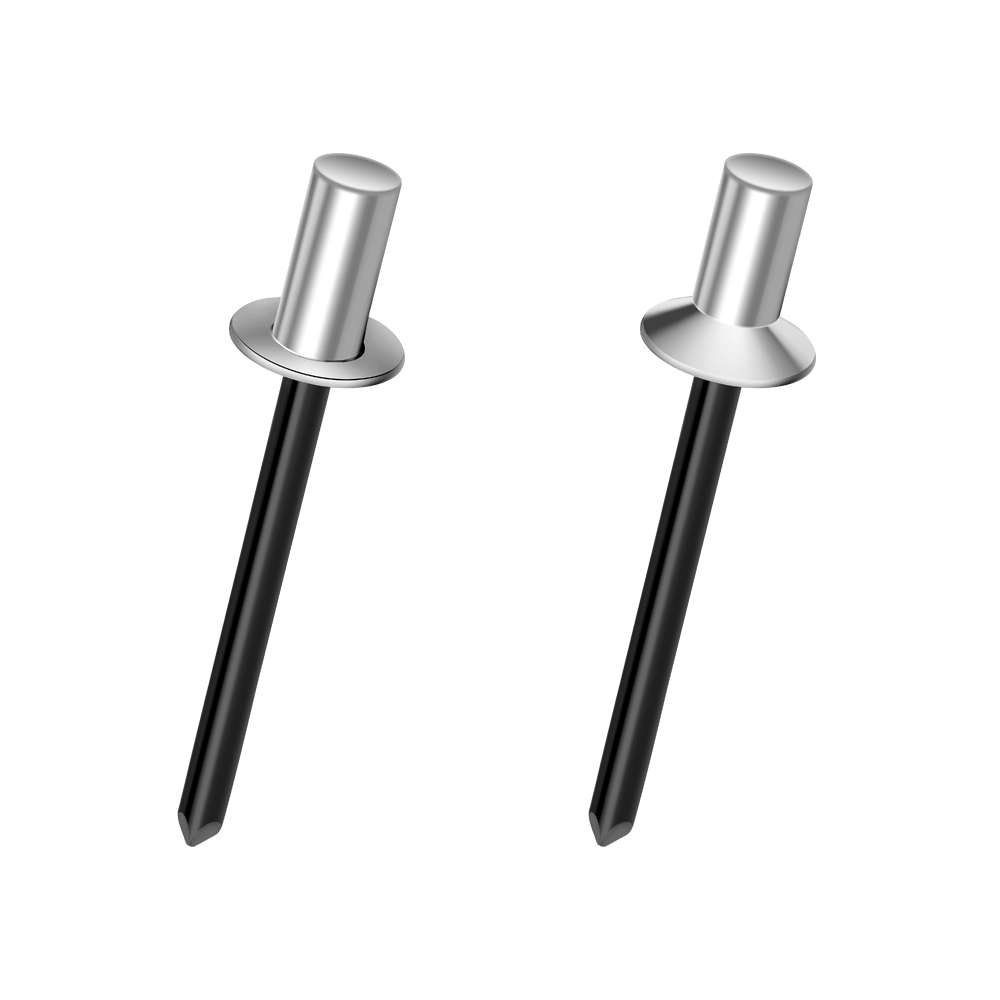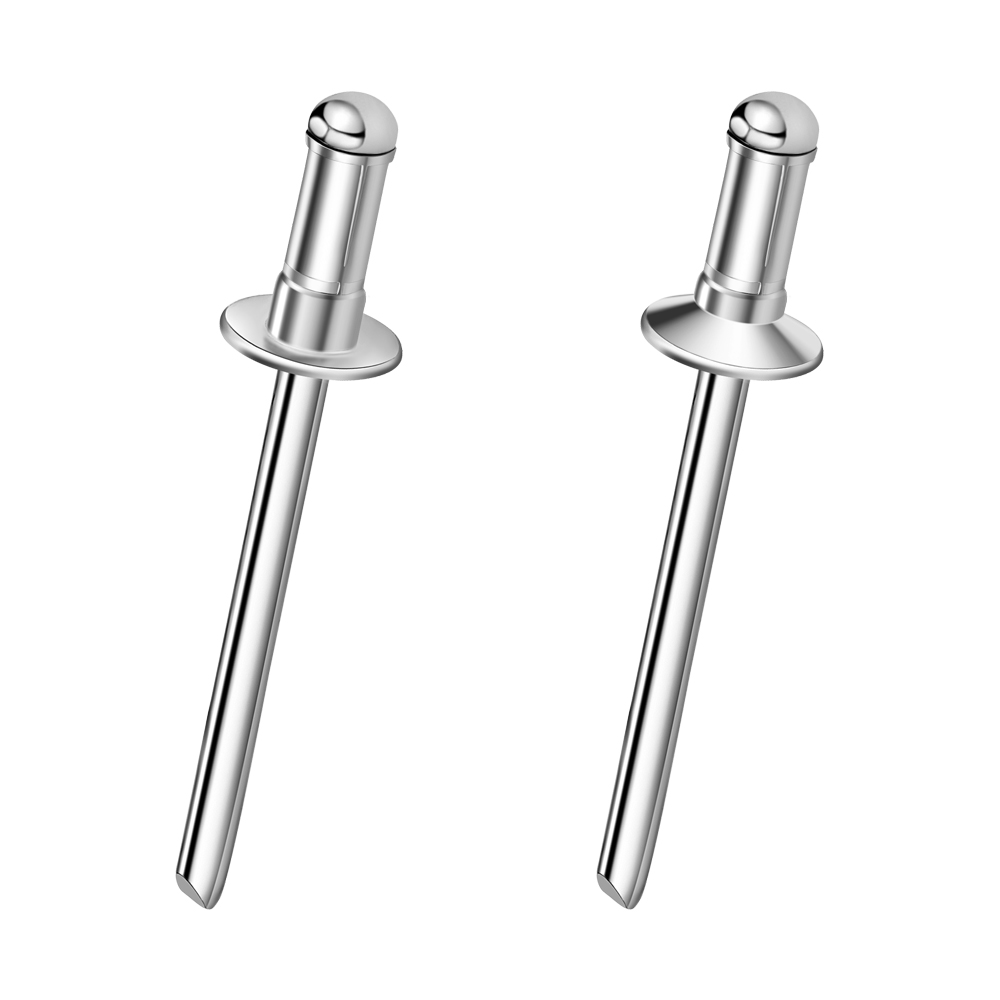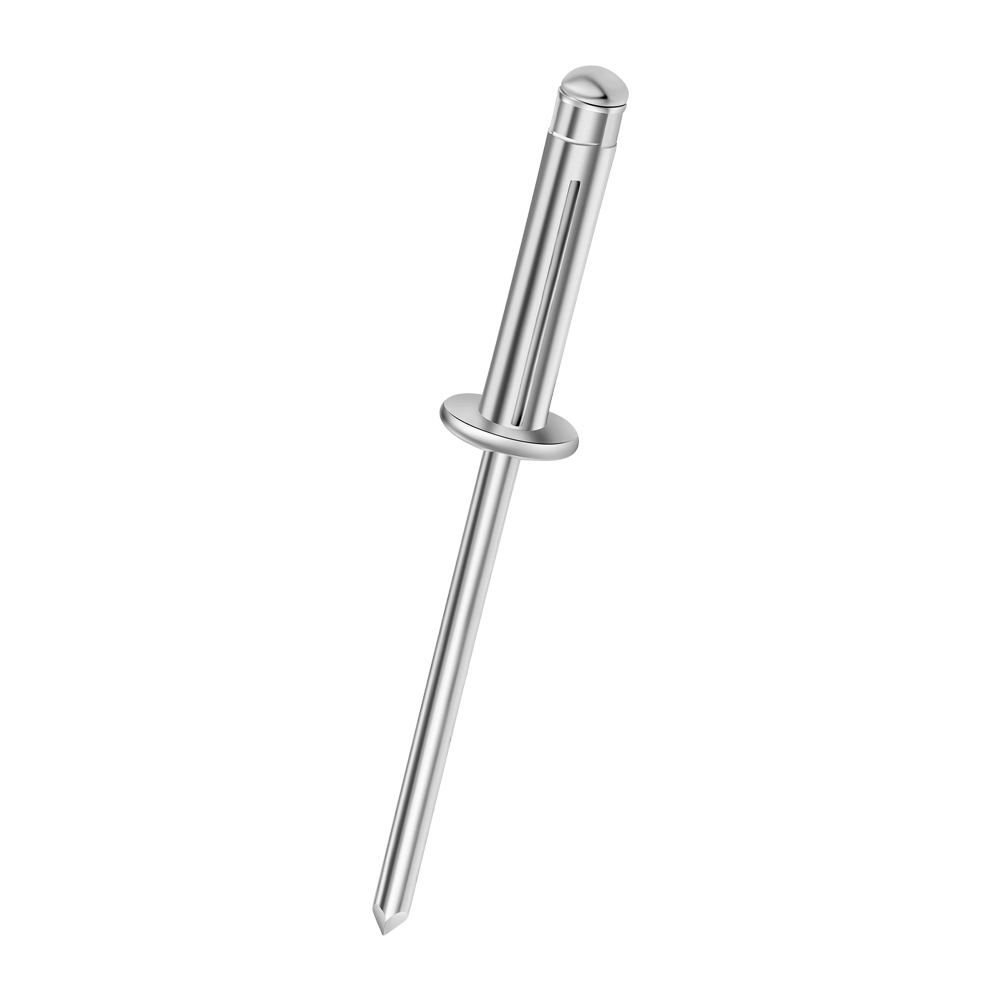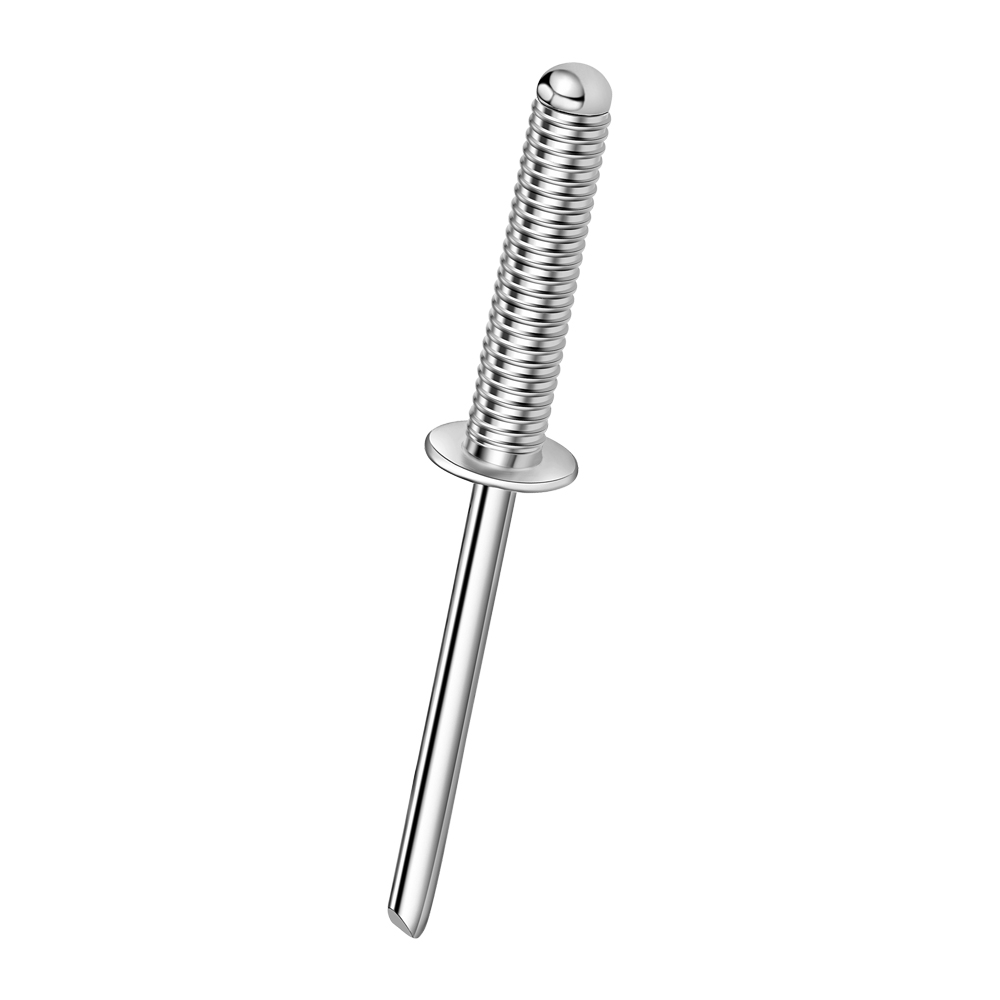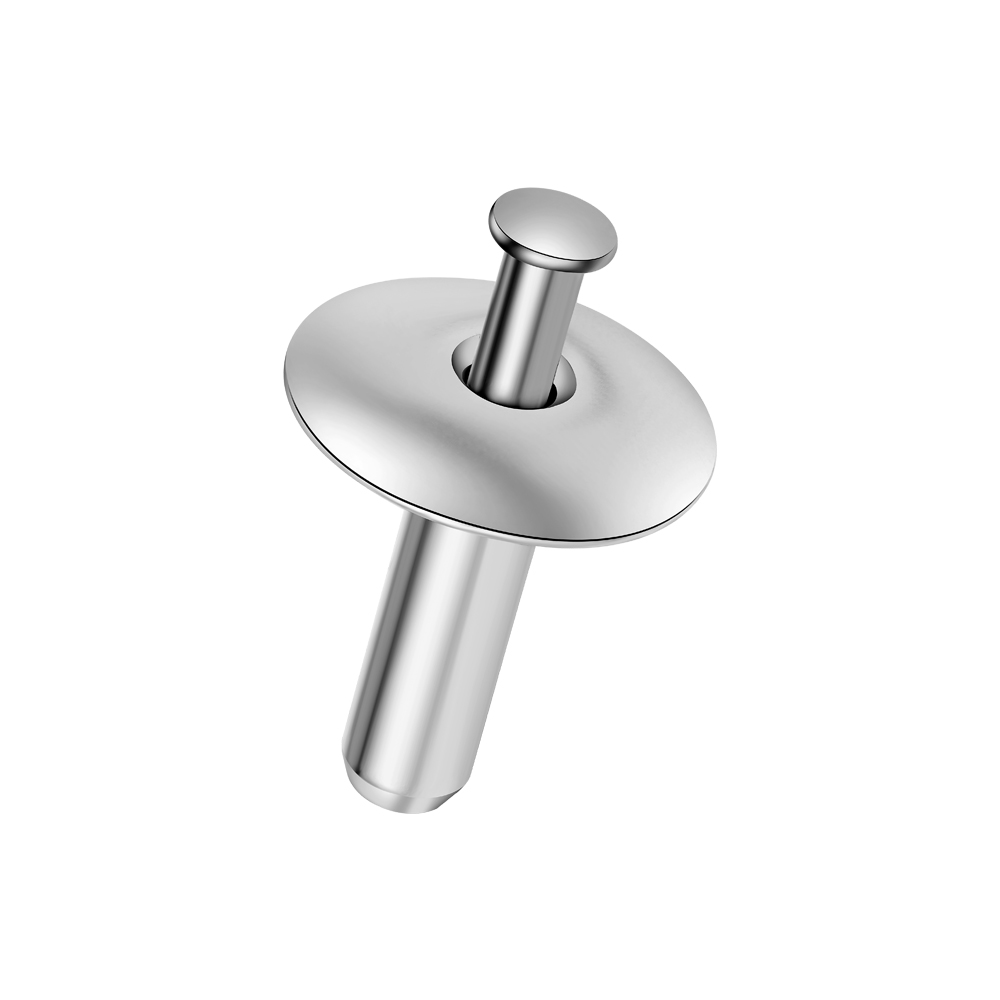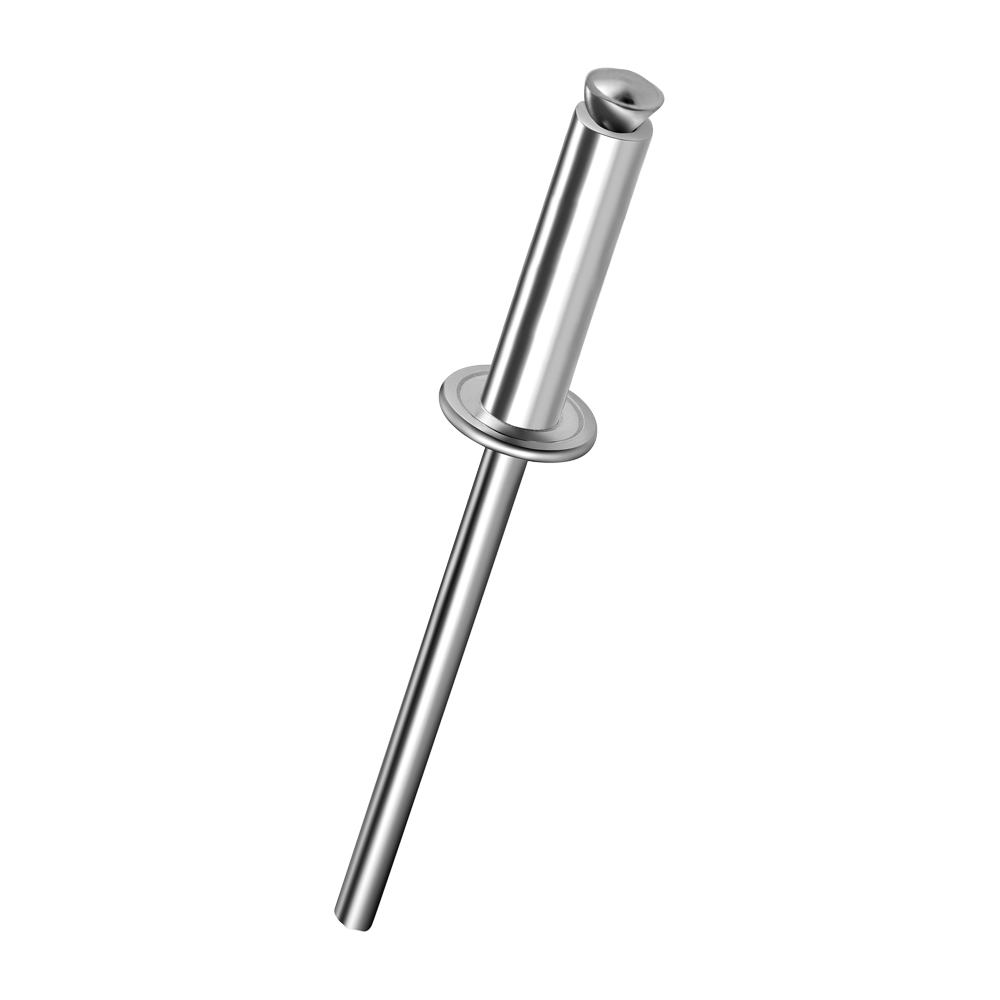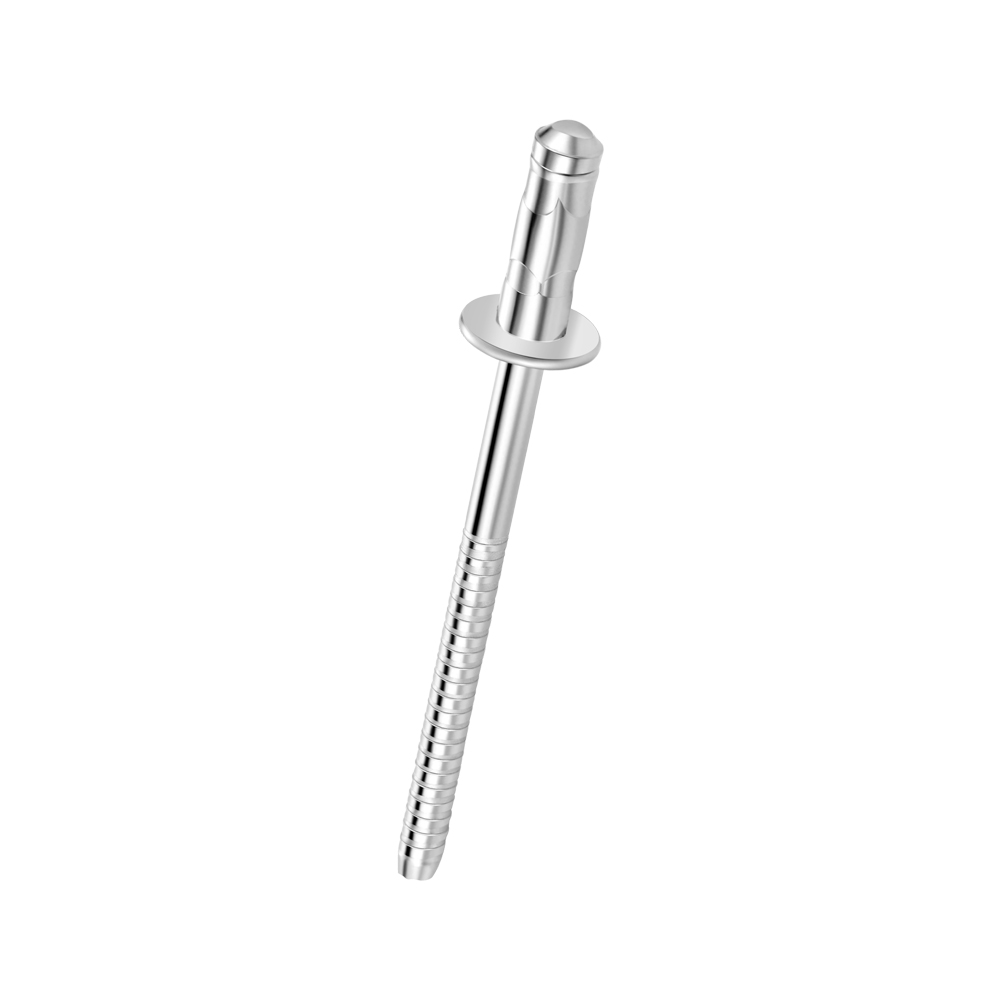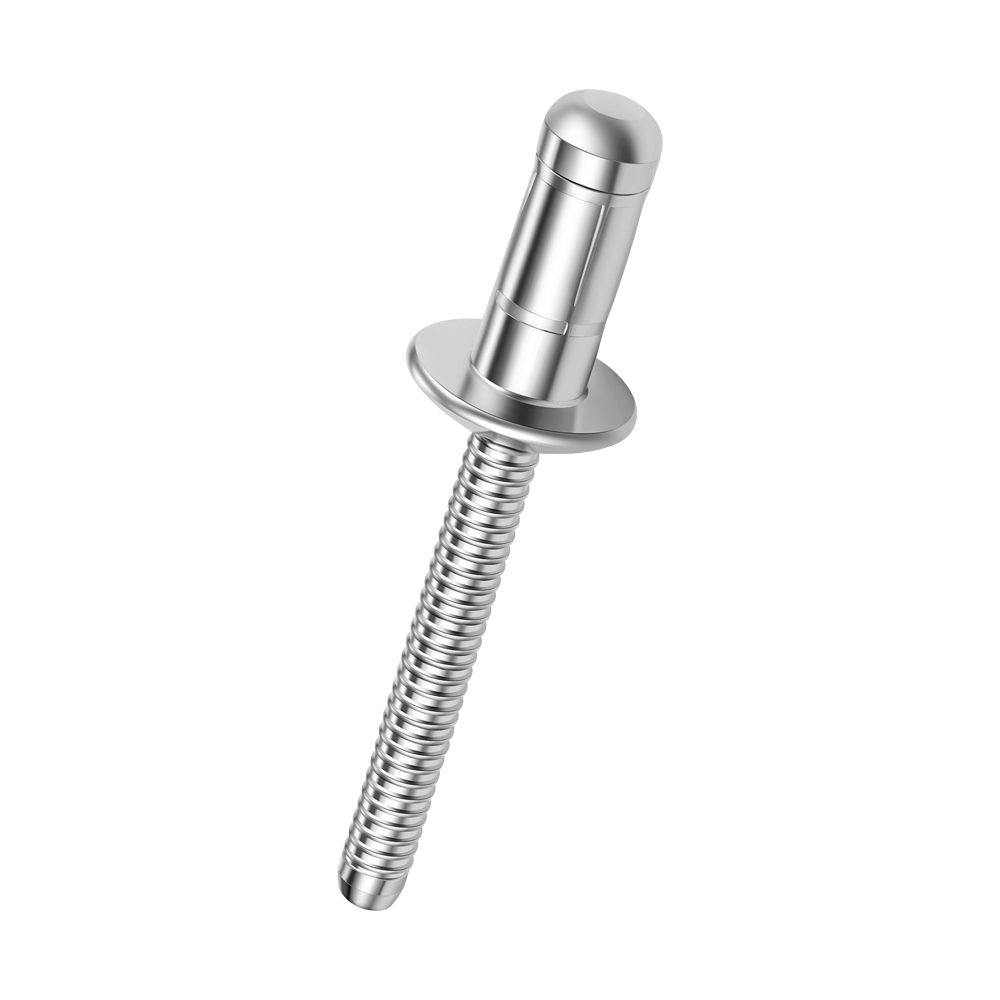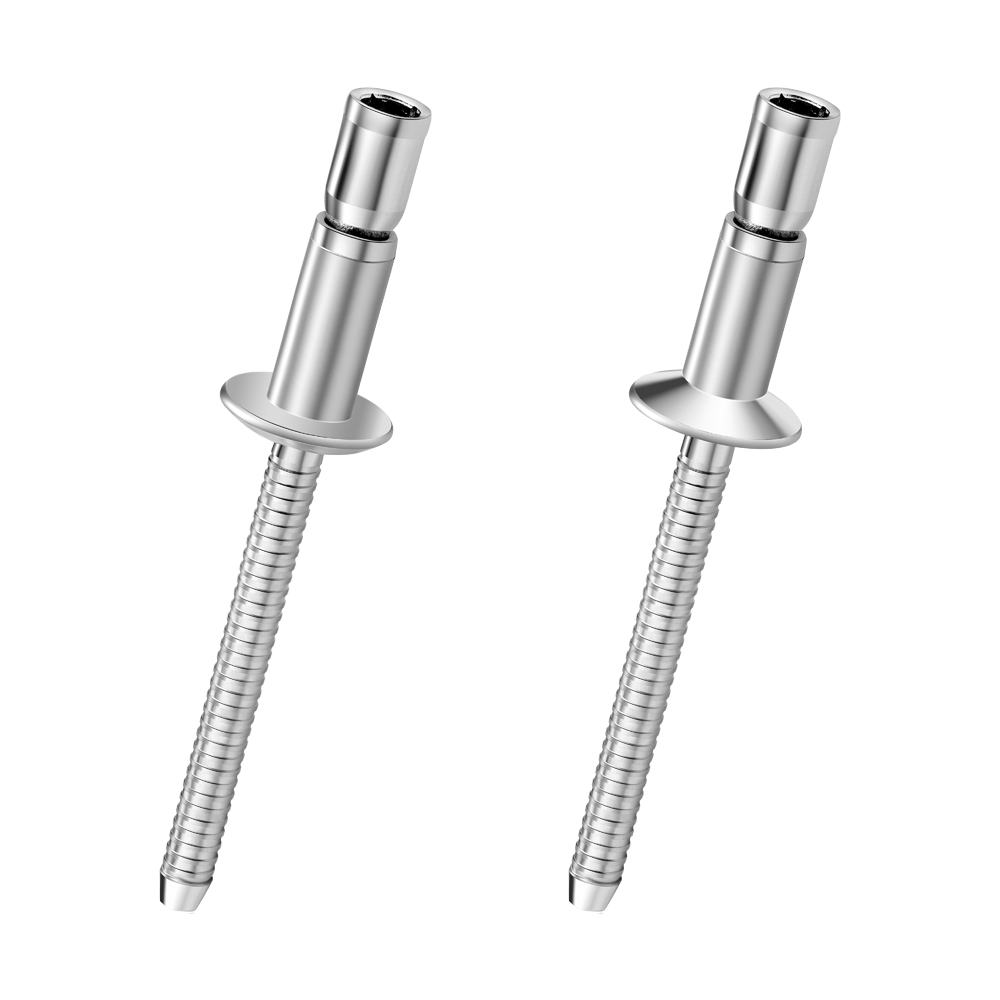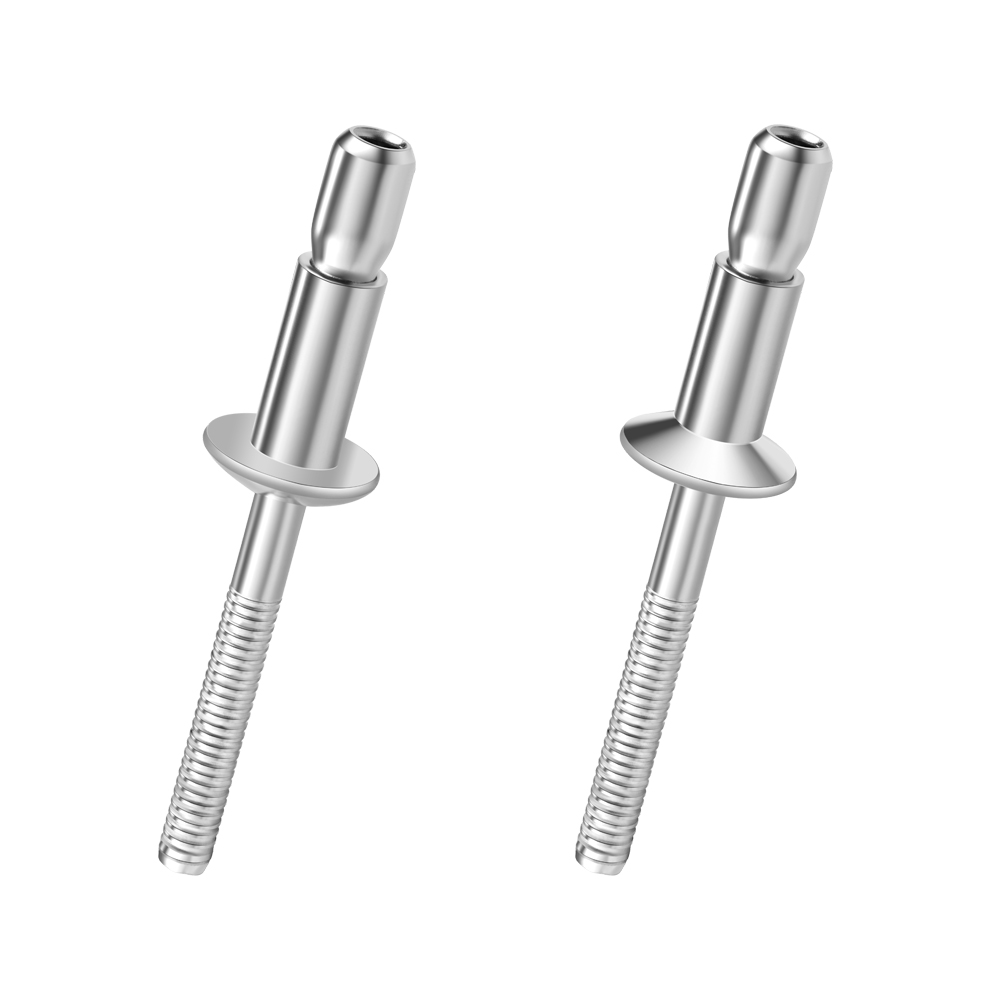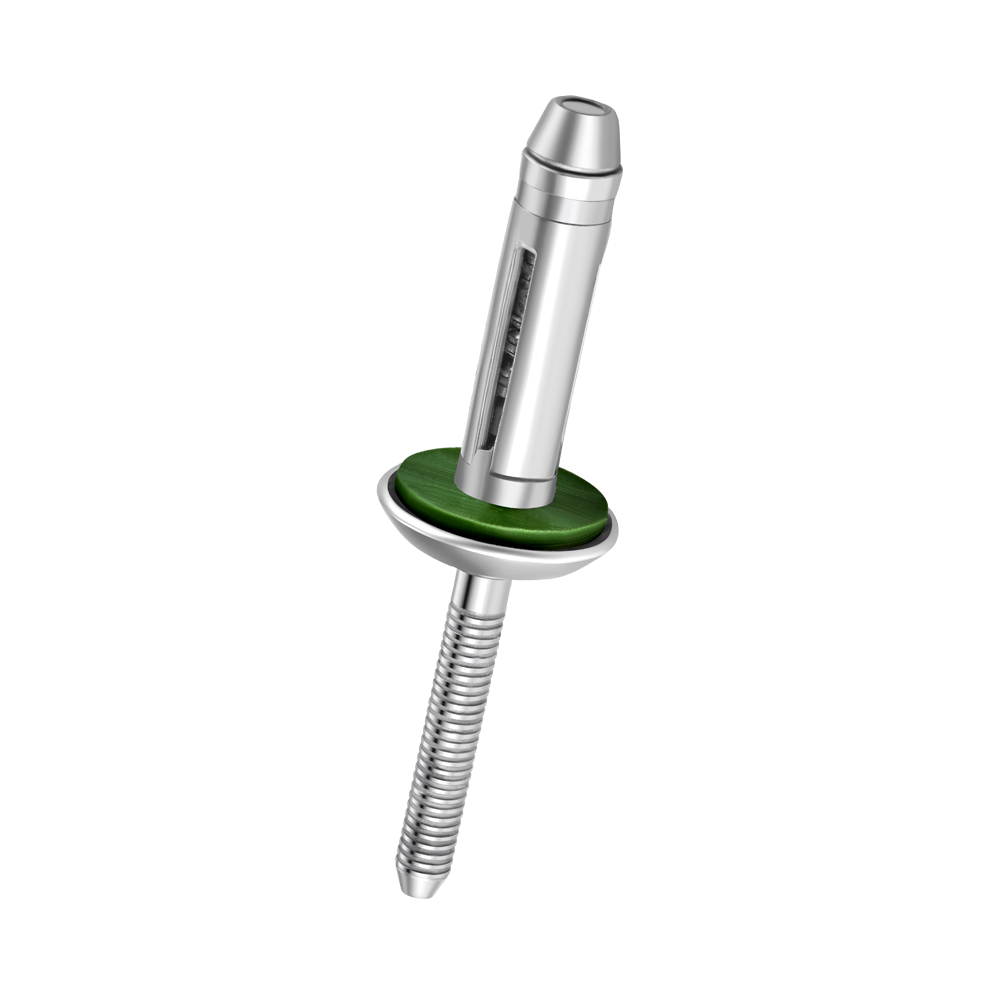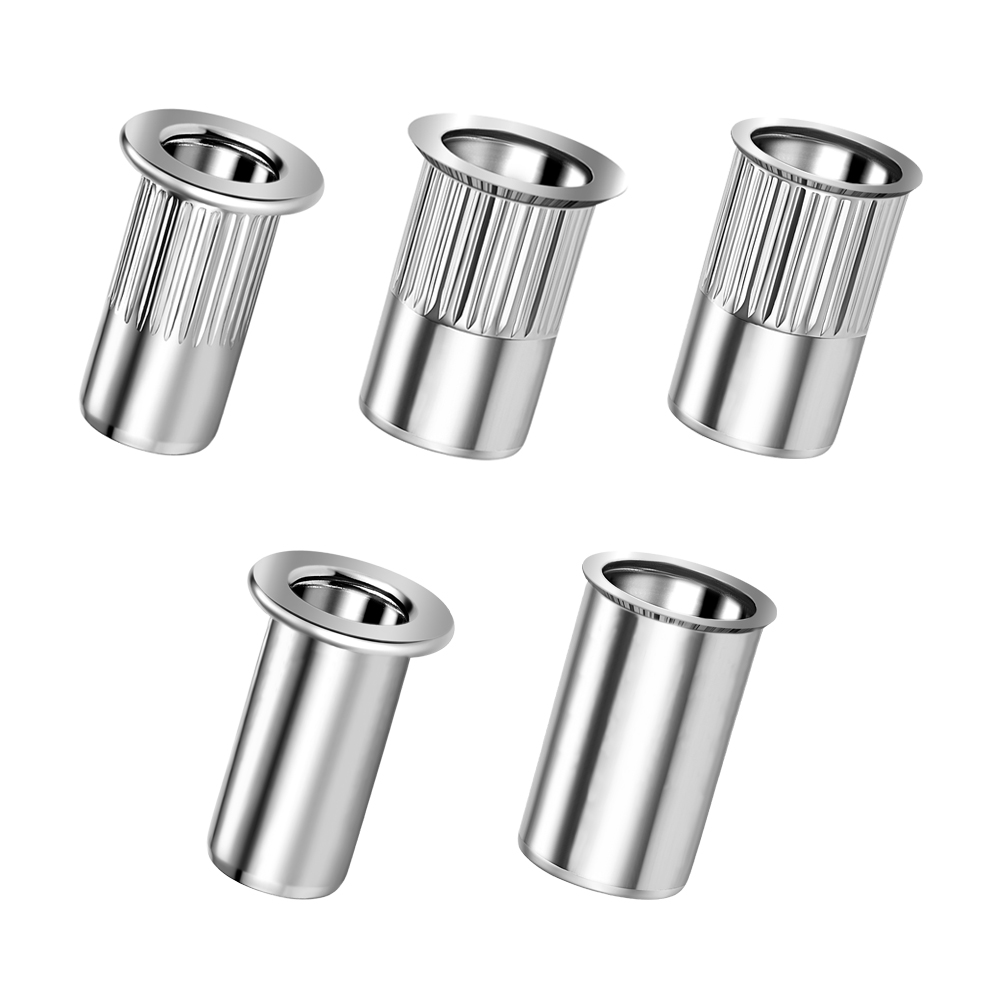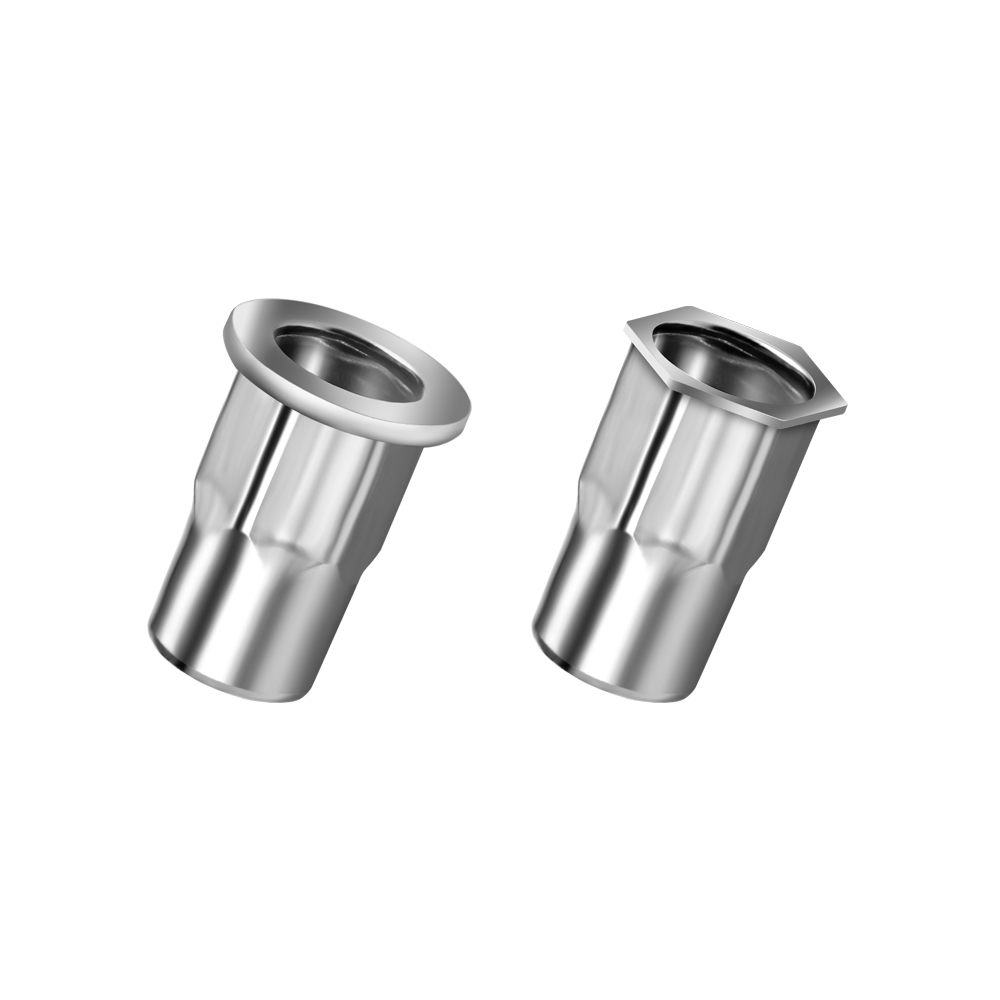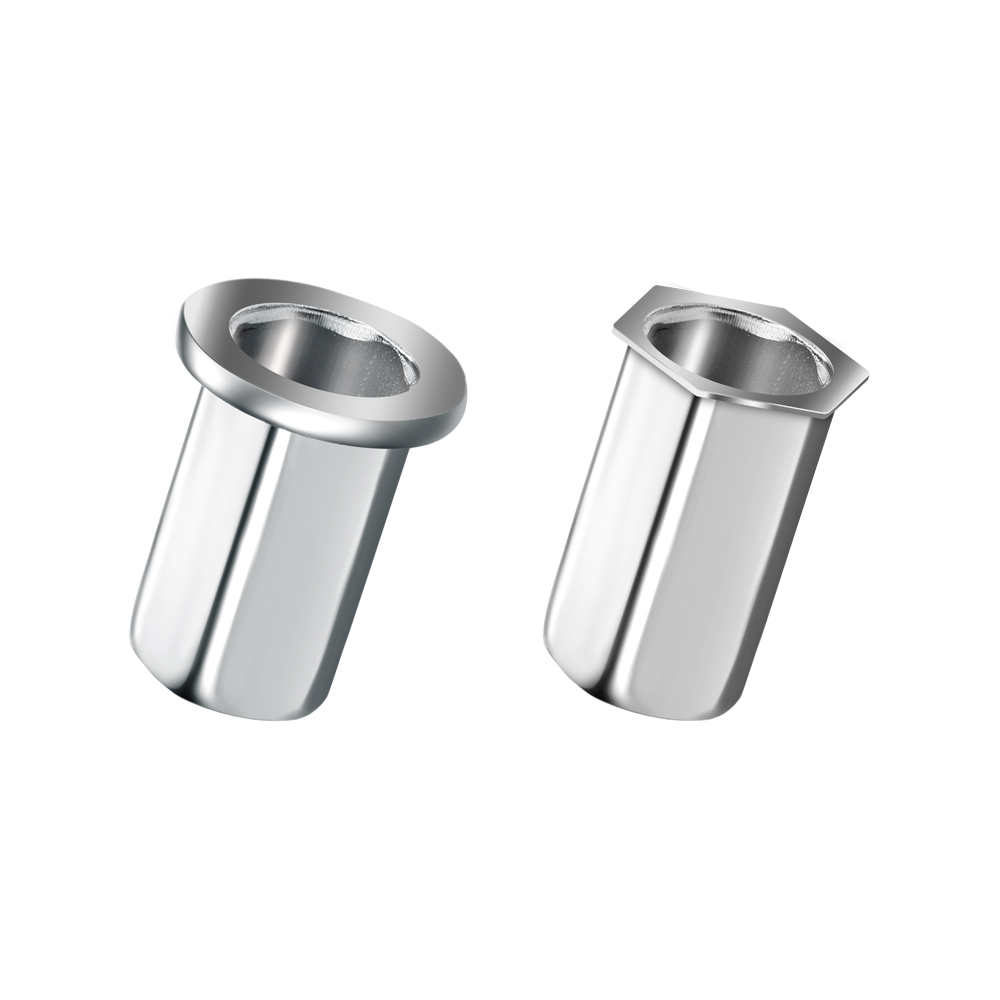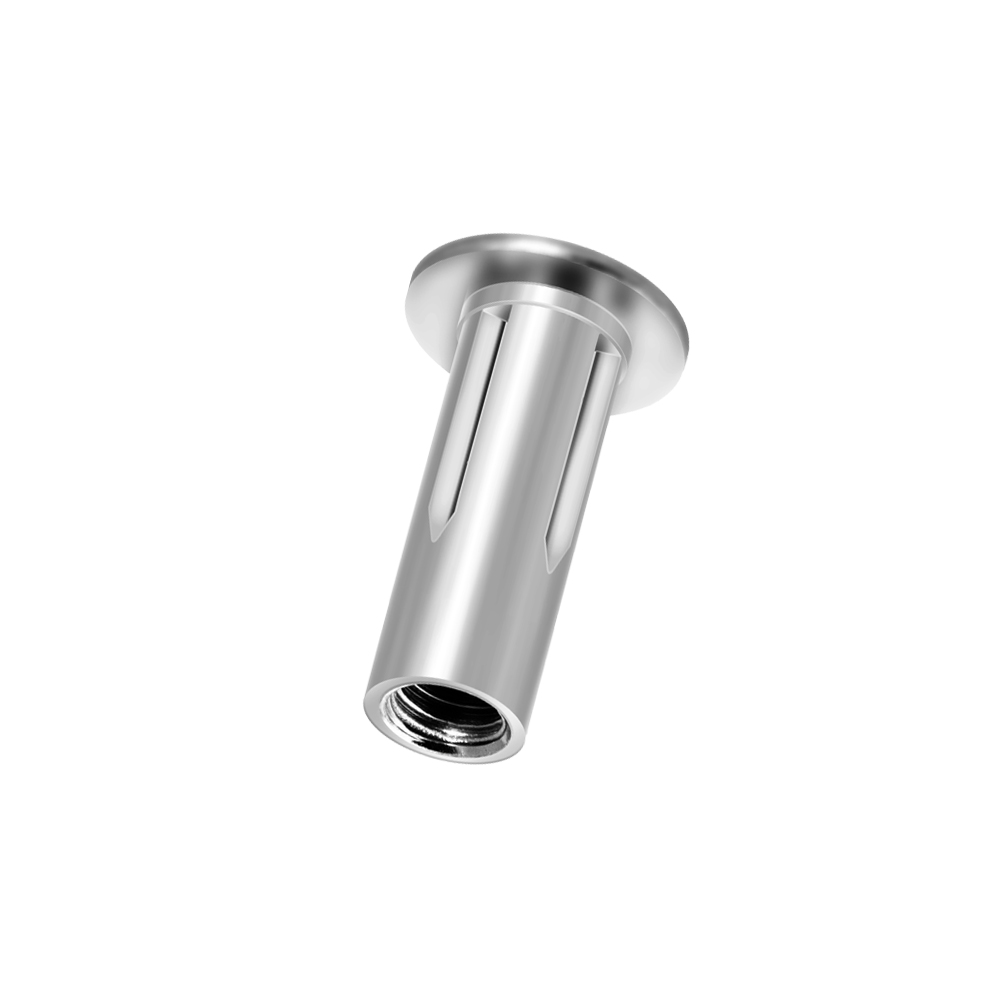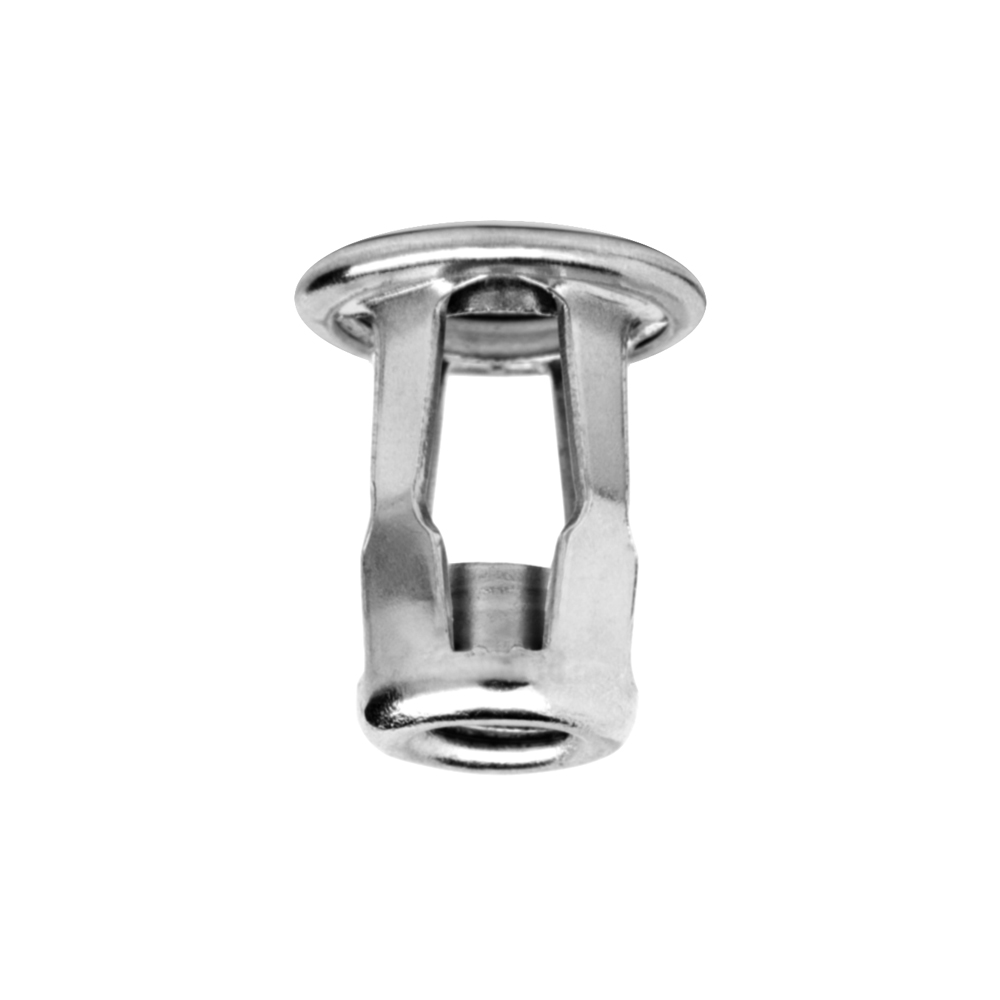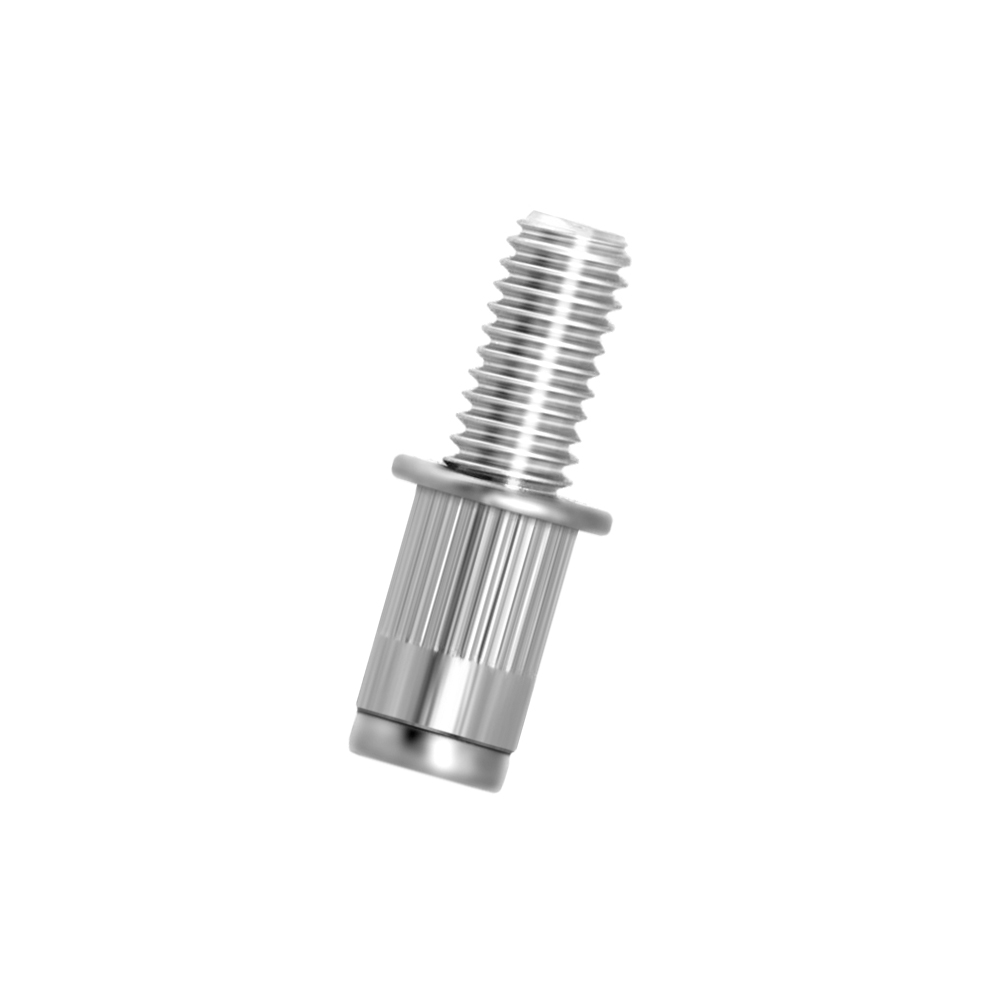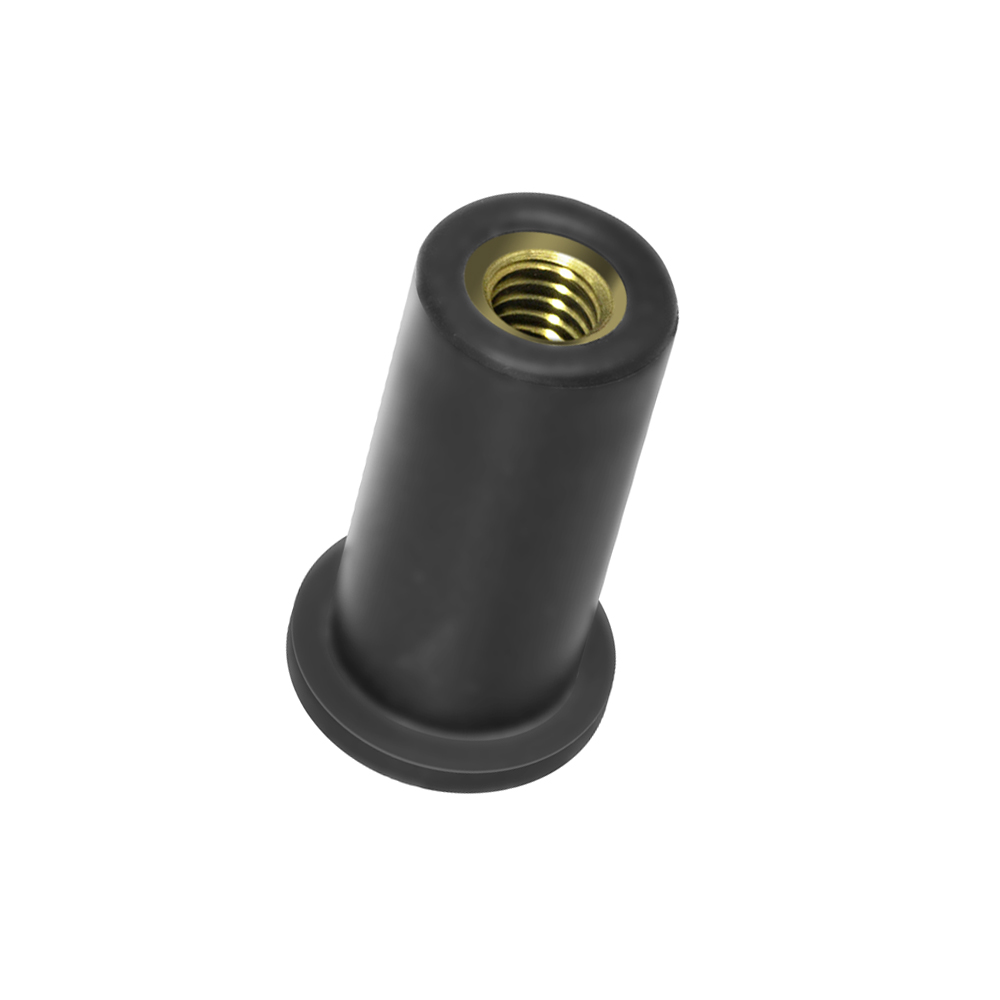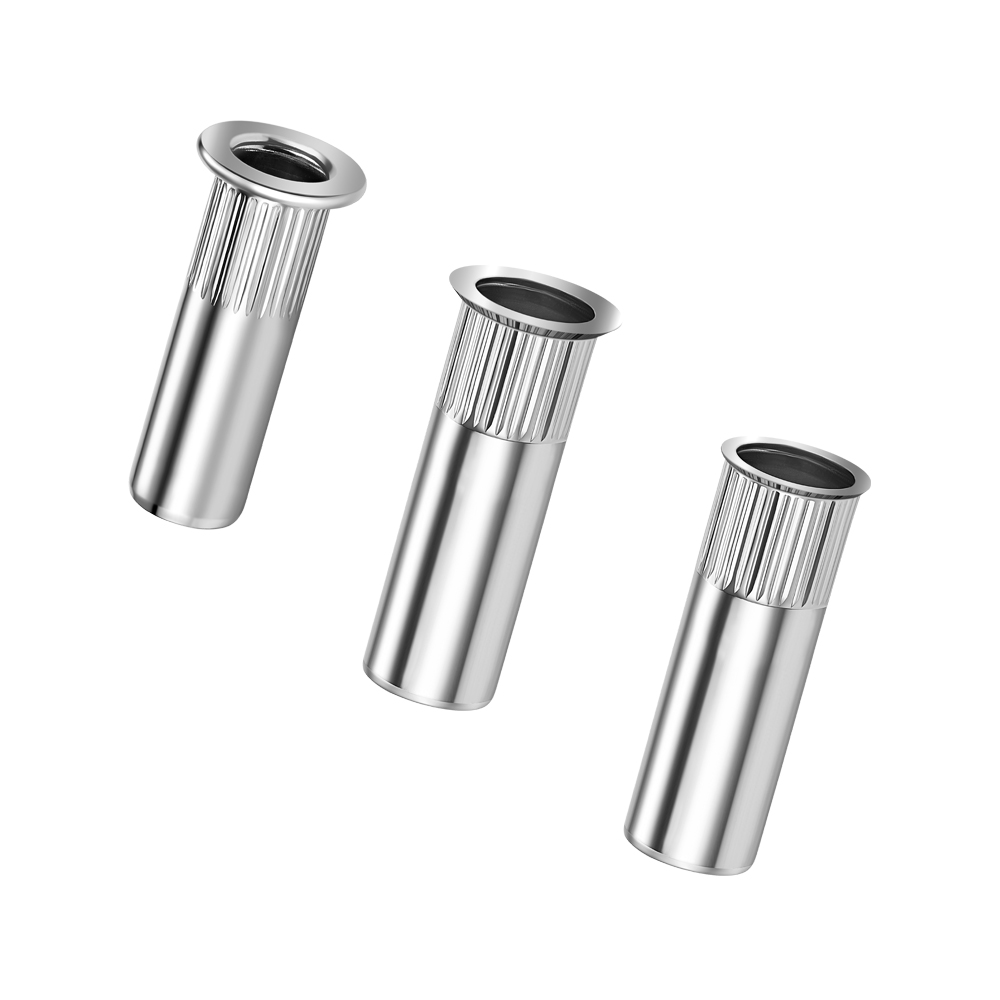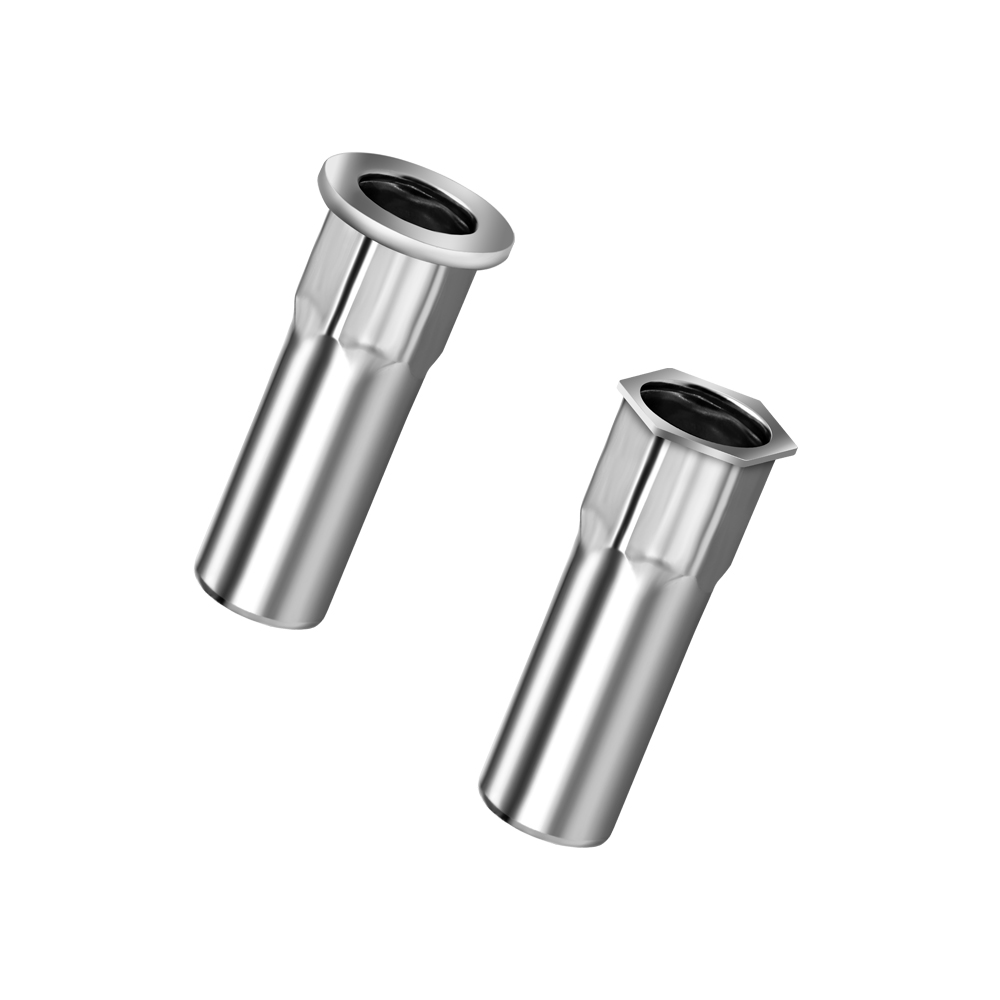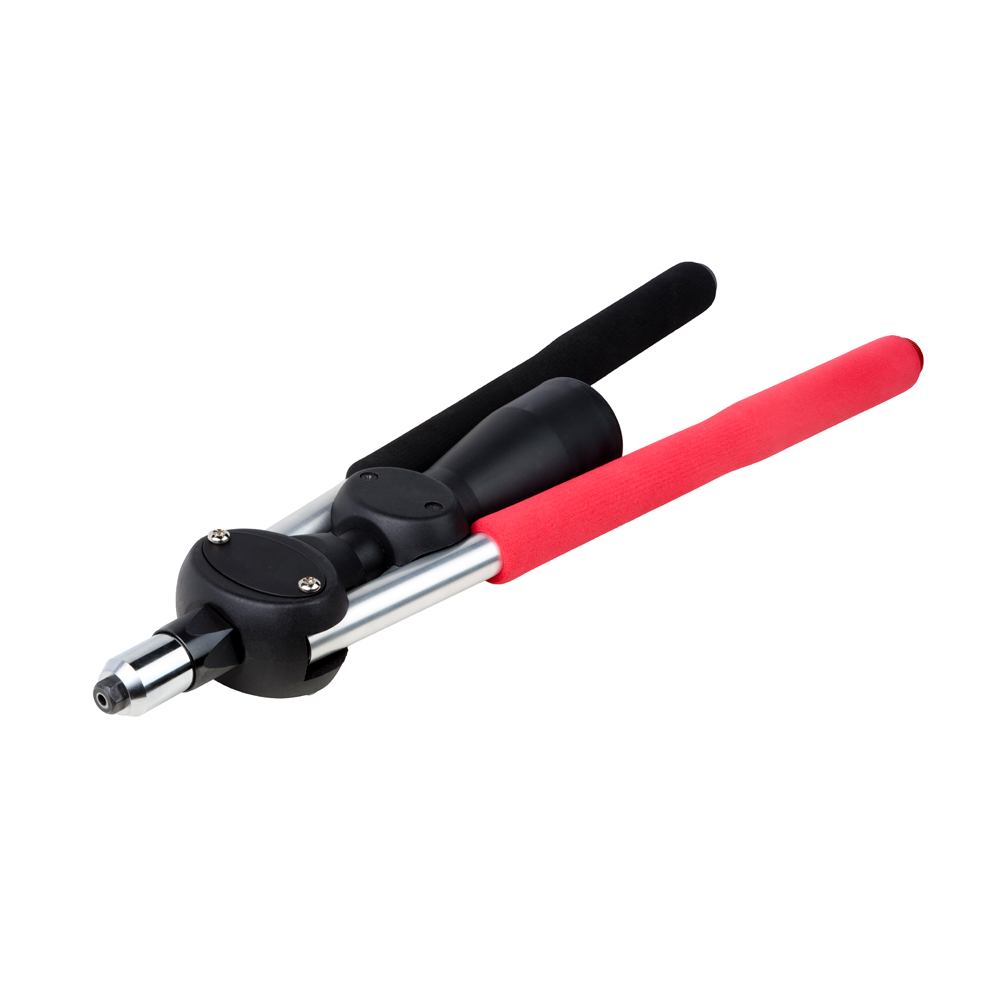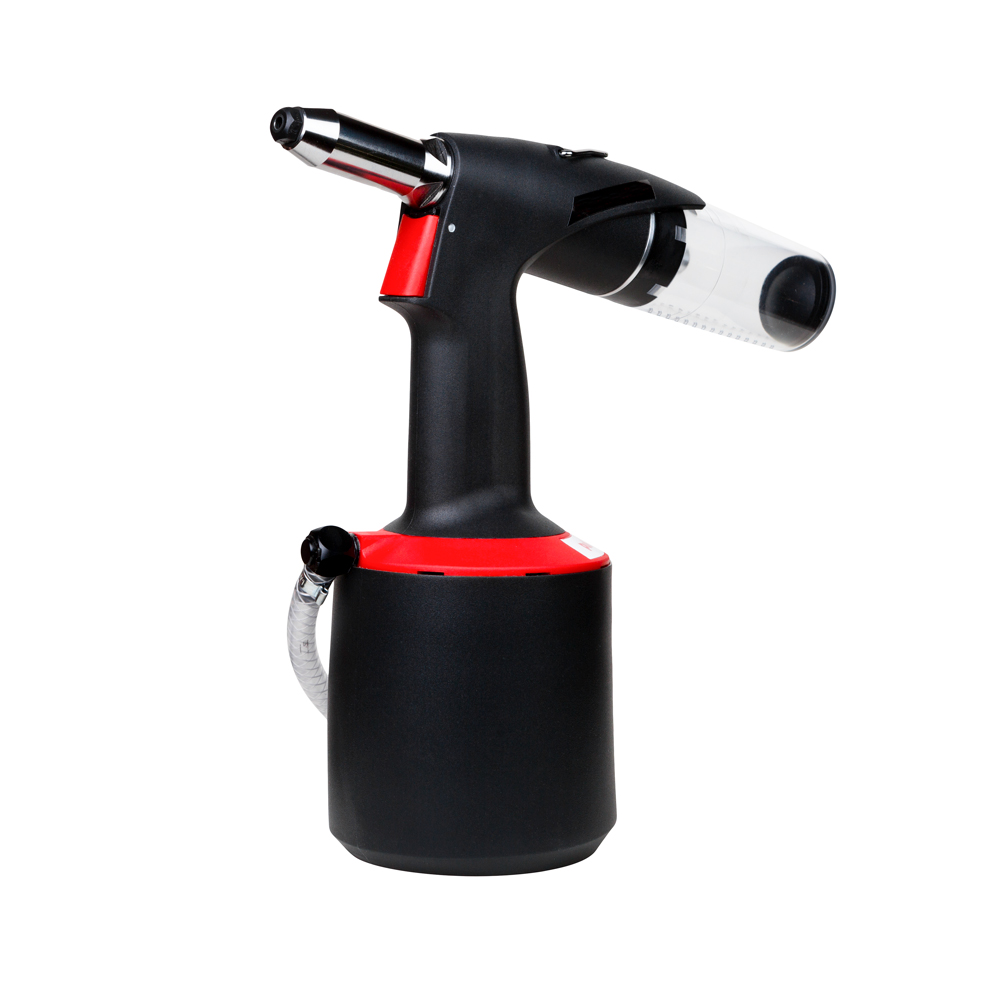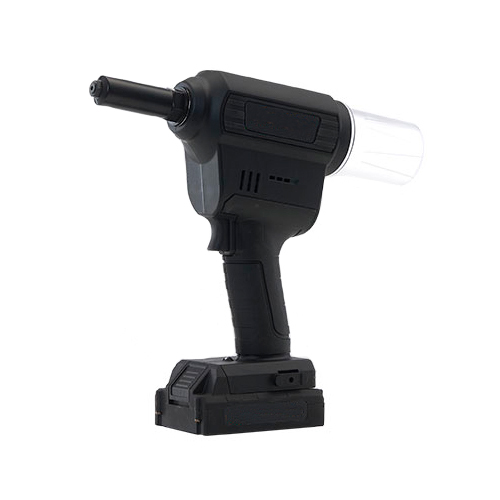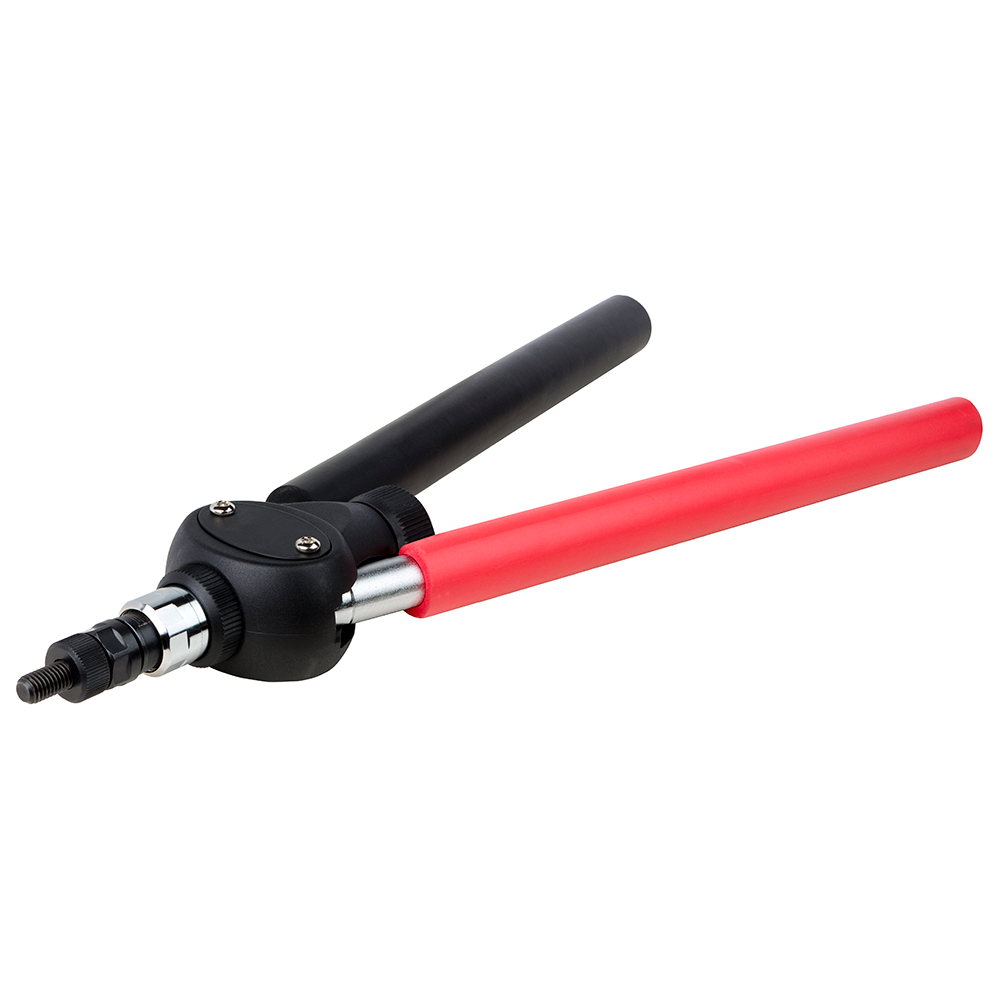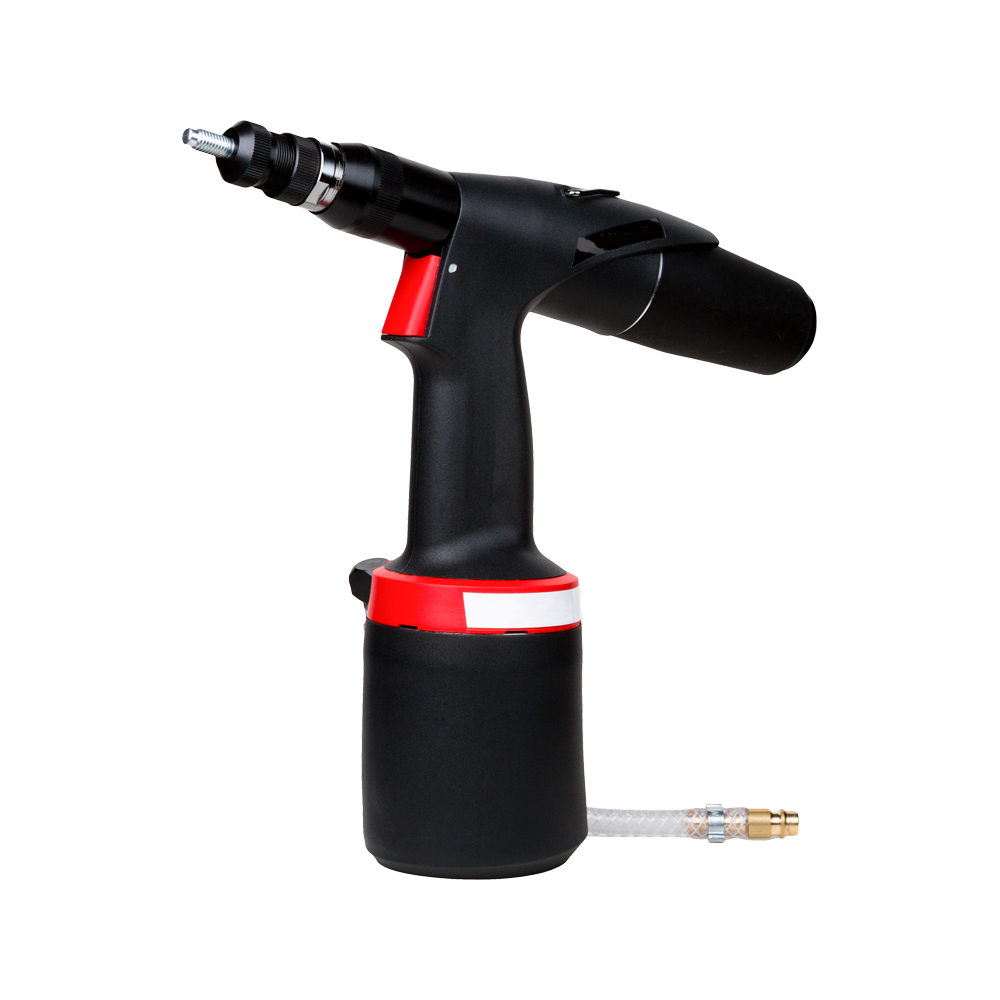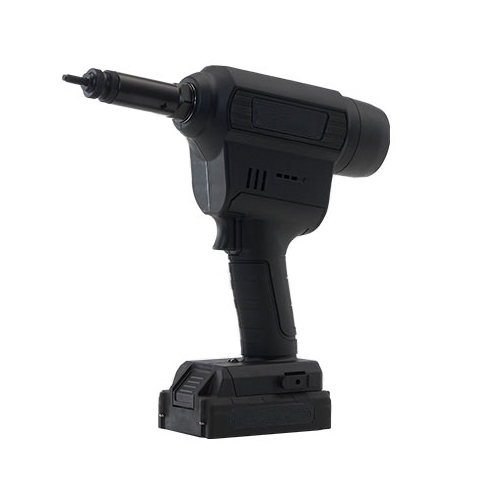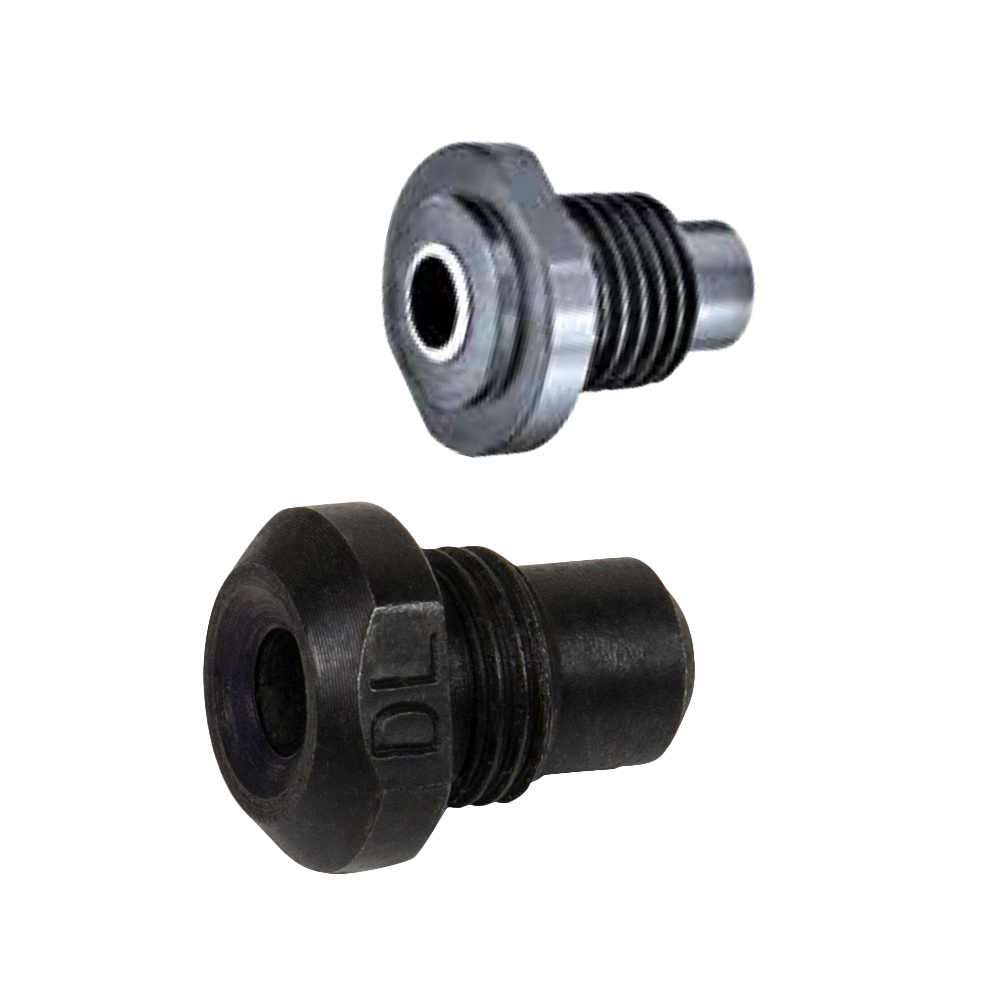Recently BIBUS has expanded the range of fastening components with a large number of blind rivet nuts and blind rivets. BIBUS can therefore offer the right solution for every blind riveting application. From blind rivets on thin and brittle materials such as glass to detachable blind rivets, you can easily order the right components directly via the webshop.
But, how exactly do you determine the ideal blind rivet nut or blind rivet for your application? BIBUS helps you to arrive at the ideal blind riveting solution. Using this article, you can select the right component based on the characteristic properties of the various blind rivets and blind rivet nuts. By going through the steps you will automatically arrive at the correct blind rivet/nut. Do you need tailor-made advice? Please feel free to contact our specialists.
1. Blind rivet nut or blind rivet
The first choice in the selection process is between a blind rivet nut or a blind rivet. As a rule, a blind rivet nut is used when the connection must be removable. By disconnecting the bolt from the nut, the connection becomes detachable. The connection realized from blind rivets, on the other hand, cannot be dismantled.
Because a blind rivet nut has to be placed by means of a nut and a bolt, it takes more time to realize the connection than with a blind rivet. The blind rivet is simply placed through the drilled hole and retracted, “rolling up” the blind rivet sleeve.
If cost is a deciding factor, a blind rivet is a logical choice. The investment for blind rivet nuts is often higher than that for blind rivets. You will immediately find the price per unit on the product page of your desired blind rivet nut or nail.
Finally, blind rivets generally realize stronger connections than blind rivets. This is due to the larger surface area of a blind rivet nut compared to a blind rivet.
| Blind rivet nuts | Blind rivets |
|---|---|
| Demountable | Not demountable |
| Longer assembly time | Shorter assembly time |
| Relatively higher purchase value | Relatively lower purchase value |
| Often stronger connection | Often less strong connection |
2. Select the right type
With only the choice between a nut or nail, the right blind rivet component has not yet been found. The wide variety of applications requires a wide range of blind rivet nuts and blind rivets. In the table below, the full range of BIBUS is highlighted based on the unique properties of the products. By looking up your blind rivet application in the first column you will find the most suitable blind rivet nut/nail for your application.
Standard blind rivets
| Application | Blind rivet solution | Product |
| Is a standard blind rivet with high ease of use sufficient? | Blind rivet standard | CN06 |
| Is een gas- en waterdichte verbinding vereist? | Blind rivet gas and watertight | CN08 |
| Is a larger clamping range important? | Blind rivet multigrip | CN07 |
| Is the nail placed on soft/delicate materials? | Blind rivet spread | CN11 |
| Does the nail have to be placed in a blind pot hole in wood/plastic? | Blind rivet grooved | CN10 |
| Does the nail have to be set in wood or other sturdy material with a hammer? | Blind rivet hammerdrive | CN12 |
| Should the nail be placed in soft materials on the blind side and hard materials on the back? | Blind rivet peel | CN09 |
(Semi-)structural blind rivets
| Application | Blind rivet solution | Product |
| Is the application heavy? | Blind rivet semi structural bulb | CN01 |
| Is the application extremely heavy? | Blind rivet structural bulb | CN02 |
| Is there an extremely heavy duty application with high tensile force? | Blind rivet structural bolt multigrip | CN03 |
| Is there an extremely heavy duty application with high tensile force and does it need to be possible to lock the housing in an internal groove? | Blind rivet structural lock multigrip | CN04 |
| Is there a strong structural application for, for example, lightweight panels? | Blind rivet structural bulbtite | CN05 |
Blind rivet nuts
| Application | Blind rivet solution | Product |
| Is a standard blind rivet nut with high ease of use sufficient? | Blind rivet nut standard | CM01 |
| Is it required that the blind rivet nut does not turn quickly? | Blind rivet nut (semi) hexagon | CM02 CM03 |
| Is a larger support surface / stronger connection required with vulnerable plates (metal and plastic)? | Blind rivet nut spread | CM04 |
| Is a nut connection necessary for thin, soft and brittle materials (glass, cardboard, plastic, etc.)? | Blind rivet nut light foldable | CM05 |
| Is an external threaded rod required for additional assembly options? | Blind rivet nut threaded end | CM06 |
| Does the nut itself have to be detachable? | Blind rivet nut rubber | CM07 |
| Does the nut connection have to be water resistant? | Blind rivet nut standaad closed | CM08 |
| Does the nut connection have to be water resistant and not able to rotate? | Blind rivet nut semi hexagon closed | CM09 |
3. Select the right material
After selecting the correct blind rivet or blind rivet nut for your application, the material of the component can be determined. When choosing the material, it is recommended to select a blind rivet nut or blind rivet in the same material as the sheet metal in which the nut/nail is attached. A stainless steel blind rivet or blind rivet nut is therefore chosen for connecting two stainless steel plates. In this way, damage from galvanic corrosion is limited/prevented.
The table below helps to make the right choice based on different material combinations. Do you need tailor-made advice? Please feel free to contact BIBUS.
| Nickel-copper-alloy | Stainless steel | Copper | Steel/Steel galvanized | Aluminum-alloy | |
| Nickel-copper-alloy | Insignificant galvanic action | Insignificant galvanic action | Insignificant galvanic action | Light galvanic action | High galvanic action |
| Stainless steel | Insignificant galvanic action | Insignificant galvanic action | Light galvanic action | Insignificant galvanic action | Light galvanic action |
| Copper | Insignificant galvanic action | Light galvanic action | Insignificant galvanic action | Medium galvanic action | Medium galvanic action |
| Steel/Steel galvanized | Light galvanic action | Insignificant galvanic action | Medium galvanic action | Insignificant galvanic action | Light galvanic action |
| Aluminum-alloy | High galvanic action | Light galvanic action | Medium galvanic action | Light galvanic action | Insignificant galvanic action |
4. Select the right size
The final choice of selecting the correct blind rivet nut or blind rivet relates to the size of the component. The width of the nail/nut must match the drilled hole and the required strength. On the product page of the desired nail/nut you will find a table with the dimensions. You can easily select and order the correct blind rivet or blind rivet nut using this table.
5. Select the right rivet tool
BIBUS also offers various options for placing the blind rivet or blind rivet nut. In the range of blind rivet pliers you will find various blind rivet pliers manual, blind rivet pliers pneumatic and blind rivet pliers battery.
The manual blind rivet pliers are used in assembly/assembly/repair work in industrial applications. The manual tool is the most interesting from a price-technical aspect. In addition, with this tool you are not dependent on compressed air or a charged battery.
When large numbers of blind rivet nuts and/or blind rivets have to be placed, pneumatic blind riveting tools offer a solution. Due to the ergonomic grip, the pneumatic blind riveting tools are easy to use and work very quickly, making this a popular machine in a production environment. This lightweight tool is very accurately capable of realizing professional blind riveting connections.
The last category of blind riveting tools is battery powered. The great advantage of power tools is that you can work 'wirelessly' at any location. This line of tools features powerful batteries, an ergonomic design and a long service life.
Order blind rivets, blind rivet nuts and rivet tools online
You can easily order the blind rivet nuts, blind rivets and blind riveting tools described above online via the BIBUS webshop. The components are available in stainless steel, steel, aluminum, bronze, copper and in various sizes. For more information or tailor-made advice, please feel free to contact the specialists at BIBUS.





